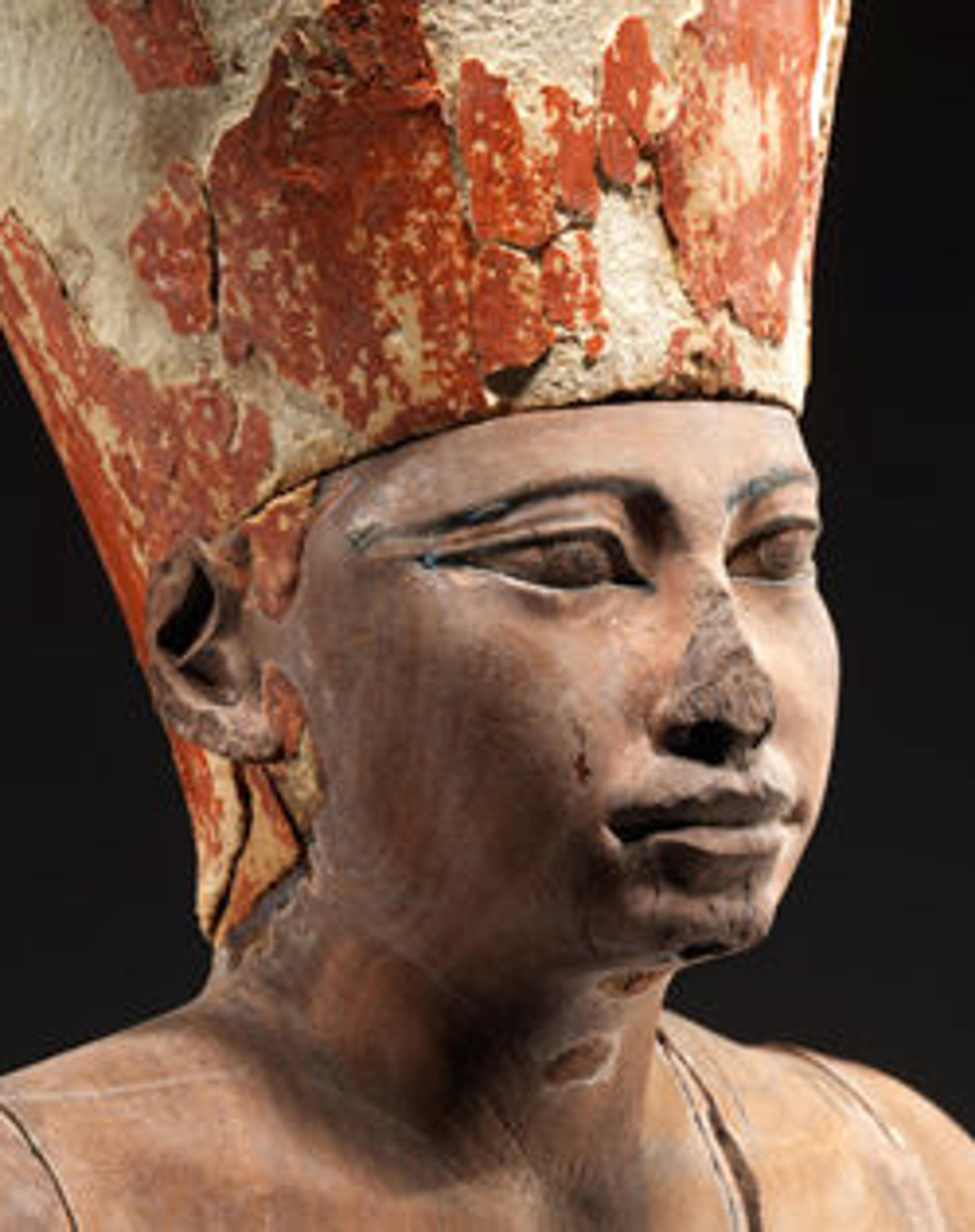Model Sporting Boat
Among the pleasures of an Egyptian noble's life were hunting excursions in the Nile marshes to fish and hunt birds. Papyrus rafts or light boats such as this were used for such excursions. Here, Meketre and his son or companion are watching the hunters from a light shelter made of woven reeds and decorated with two large shields. In the prow, two men aim harpoons at some fish, while amidships a kneeling fisherman removes the harpoon from a bolti fish. An earlier catch, a large Mormyrus, is being presented to Meketre. A bunchof coots, caught previously in a clapnet, are presented by a man and a woman, who wears a bead net over her shoulders, brings a duck. The poles of the clapnet are now lashed to the grilles of the shelter; the net pegs lie on the deck. The presence of females from a noble's family in such marsh scenes is a recurring theme in Egyptian art.
Artwork Details
- Title:Model Sporting Boat
- Period:Middle Kingdom
- Dynasty:Dynasty 12
- Reign:reign of Amenemhat I, early
- Date:ca. 1981–1975 B.C.
- Geography:From Egypt, Upper Egypt, Thebes, Southern Asasif, Tomb of Meketre (TT 280, MMA 1101), Serdab, MMA excavations, 1920
- Medium:Plastered and painted wood, linen, linen twine, copper
- Dimensions:Boat with rudder and paddles: L. 121.7 cm (47 15/16 in.); H. 34.3 cm (13 1/2 in.); W. 30.6 cm (12 1/16 in.)
Hull: L. 112.5 cm (44 5/16 in.); W. 23.7 cm (9 5/16 in.) - Credit Line:Rogers Fund and Edward S. Harkness Gift, 1920
- Object Number:20.3.6
- Curatorial Department: Egyptian Art
More Artwork
Research Resources
The Met provides unparalleled resources for research and welcomes an international community of students and scholars. The Met's Open Access API is where creators and researchers can connect to the The Met collection. Open Access data and public domain images are available for unrestricted commercial and noncommercial use without permission or fee.
To request images under copyright and other restrictions, please use this Image Request form.
Feedback
We continue to research and examine historical and cultural context for objects in The Met collection. If you have comments or questions about this object record, please contact us using the form below. The Museum looks forward to receiving your comments.
